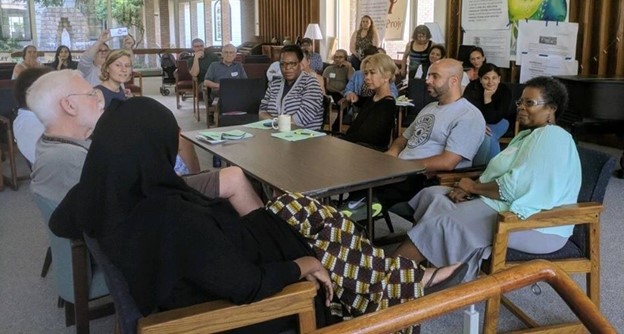Diversity is a goal for many organizations, yet it is not always connected to better outcomes such as retaining leaders, developing strategies, and mobilizing volunteers. Extensive research has examined whether demographic diversity hinders or improves organizational effectiveness, and the overall results are inconclusive. What enables diverse organizations to fully realize the benefits of being diverse?
Being Diverse is Not Enough: The Importance of Engaging Social Differences

Key Findings
- An organization’s ability to realize the benefits of diversity is related to how its members interact with each other.
- Organizations whose members participate in bridging cultural activities and discuss their social differences are more effective.
- Simply being diverse is not enough for an organization to realize the benefits of diversity. To do so, its members need to engage with their social differences.
Interactions Matter
Many organizations aspire to be socially diverse, but greater racial, class, gender, and religious diversity within an organization does not necessarily yield greater effectiveness. Although several studies have examined whether diversity hinders or improves an organization’s outcomes, the overall results are not conclusive one way or the other. This inconsistency is partly because most studies look at the social composition of an organization’s members (for example, the percentage of women or people of color), but not how members interact with each other––which affects diversity’s impact on an organization’s outcomes.
I studied the leadership teams of organizations engaged in community organizing because their leadership teams are often more diverse in terms of race, class, gender, and religion than most organizations. While these organizations have access to a wide variety of social resources (because of the diversity of their leadership), access alone isn’t enough for an organization to realize the benefits afforded by a diverse team of individuals. Crucially, diverse organizations can improve their outcomes by ensuring that their members interact in ways that engage, rather than ignore, their social differences.
However, demographically diverse organizations vary in the extent to which their members engage in their social differences. For example, some organizations actually discourage members from focusing on their social differences, while others actively encourage members to openly discuss and explore their social differences. Notably, both the type and content of interaction among members of diverse organizations can indicate the degree to which members engage with their differences.

Bridging Cultural Activities
Certain types of interaction can foster engagement across lines of difference. For example, members of a diverse organization are likely to engage in their social differences when they participate in bridging cultural activities. These activities (for example, playing games, sharing meals, dancing, and singing songs) exist in all cultures, but take on different, culturally specific forms. When members of a diverse organization participate in these types of activities, sharing these varied forms of familiar activities can highlight what members have in common and positively affirm their differences. As a result, participating in bridging cultural activities can help forge a shared group identity while promoting social differences.
Talking Openly About Social Differences
Similarly, the content of interactions among an organization’s members can be related to an organization’s capacity to mobilize resources. For example, a team that discusses the implications of income differences among its members might consider those differences when deciding where to hold a particular event and whether to provide childcare. By talking openly about their social differences, members can deepen their understanding of each other, learn about issues from different perspectives, and be exposed to alternative approaches to addressing those issues. Furthermore, such discussions can encourage members to engage with novel ideas others propose and consider implementing unfamiliar or previously undervalued strategies.
Improving Social Outcomes and Increasing Organizational Effectiveness
When members of a diverse organization participate in bridging cultural activities and talk about their social differences, it can help members feel known and valued as well as improve relationships among members. I also found that organizations whose members interact in these ways tend to experience better outcomes. In particular, they were more effective at forming alliances, developing strategies, organizing constituents, and mobilizing people.
Overall, the benefits of a diverse leadership team include members bringing to the table a broad range of experiences, resources, and networks. However, diversity alone does not guarantee that such benefits will be realized. It is only when members interact in ways that engage with their social differences that an organization is likely to realize the benefits of diversity.
Meet the Researcher
Brad R. Fulton is an Associate Professor of Public Affairs in the O'Neill School at Indiana University. He is a sociologist whose research examines the social, political, and economic impact of community-based organizations. He directs the National Study of Community Organizing—a multi-level study that analyzes the causes and consequences of racial, socioeconomic, and religious diversity within grassroots advocacy organizations. He co-authored A Shared Future: Faith-Based Organizing for Racial Equity and Ethical Democracy (University of Chicago Press).
This brief is drawn from Fulton's 2021 article in Social Forces "Engaging Differences: How Socially Diverse Organizations Can Mobilize Their Resources More Effectively."


